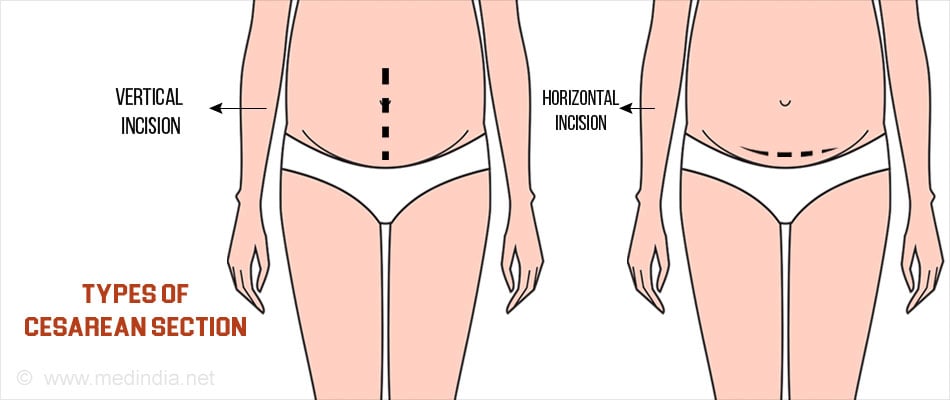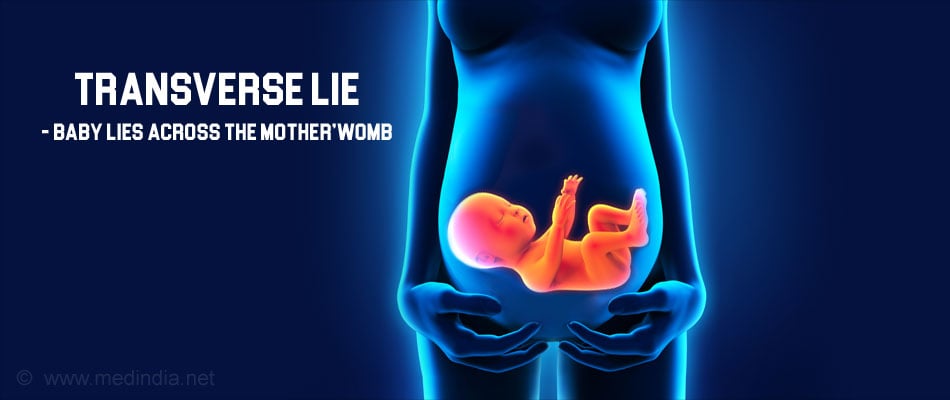Types and Indications of Cesarean Sections
Cesarean sections are classified according to the technique and incision used in the procedure.
- Classical Cesarean Section: A midline vertical incision on the abdomen and the uterus is made to deliver the baby. Owing to a large number of complications associated with the technique, it is hardly practiced any longer.
- Lower Segment Cesarean Section (LSCS): It is the most commonly preferred method wherein a horizontal or transverse incision is made on the lower part of the abdomen to deliver the baby. It involves less blood loss and is easier to repair than other incisions employed for the purpose. The incision also is low so cosmetically more acceptable. The LSCS can further be graded depending on when it is performed
- Emergency C Section: When there is suspected danger to the mother's or baby’s condition an emergency section is resorted to.
- Elective Cesarean Section (Planned C-Section): The Cesarean is planned and done on a specific date chosen by the patient and the doctor after assessing the maturity of the baby.
- Cesarean Hysterectomy - It is a life-saving procedure in which the uterus is removed after delivering the baby through a cesarean section. It is performed when bleeding cannot be controlled or when the placenta adheres to the uterine wall and it is not possible to separate it.

Why is Emergency Cesarean Section performed?
Under certain condition this is indicated and includes -
- Fetal Distress- During the course of labor or even before the onset of labor, if a baby at or near full term, is found to have a slow or irregular heart rate, it signals distress for the baby.
The baby may also send SOS signals by passing meconium, which becomes apparent when the amniotic fluid leaks out. This could happen due to separation of the placenta and bleeding.
Likewise, if the umbilical cord may slip out during labor and the blood supply to the baby could be hampered. If the baby is not delivered immediately at this point of time, it could lead to death of baby. This is an emergency situation and the baby has to be delivered immediately.
- Maternal Distress- If the mother faces any life-threatening situations during or before labor, like excess bleeding or surge of blood pressure, an emergency Cesarean has to be done to save the mother’s life.
- Mechanical Impedance to the Progress of Labor – This can be due to the mother's birth passage being too narrow, or the baby head being oversized for the mother’s birth canal. At times there maybe failure of the contractions of the uterus to progress and prolonged labor can endanger the baby's life necessitating Cesarean section.
What is Elective Cesarean Section?
Elective Cesarean section is most commonly being performed on request of mothers who wish to avoid labor pain.
Indications for an Elective Cesarean Section
The most common indications of a Cesarean section in the present day are -
- Previous Cesarean section quite often becomes an indication to deliver the next child also by a Cesarean section. Concerns about previous scar on the uterus giving way during normal labor often leads to this decision.
- Previous Classical Cesarean section also leads to a repeat Cesarean as these scars tend to be rather weak and may tear open during a normal vaginal delivery.
- Placenta praevia grade 4
- Abnormal position of the baby such as breech or transverse lie where the baby lies across the mother’s womb.

- Tumors within the mother's pelvic cavity, or large ovarian cysts
- Genital herpes in the mother– Here a Cesarean is resorted to so that the mother’s infection does not pass on to the baby during its journey in the mother’s birth canal.
- Medical problems in the mother like high blood pressure or diabetes
- Triplets or more number of babies
- In Vitro Fertilisation (IVF) or Intracytoplasmic Sperm Injection (ICSI) pregnancies
- HIV infection in the mother is another instance when Cesarean section is done to prevent transmission of the infection to the baby in the course of a normal delivery.
- Heavy and Big Baby - >4 kg in weight.
- Uterine deformity like a bicornuate uterus which makes vaginal delivery difficult.
 MEDINDIA
MEDINDIA

 Email
Email










Some hospital they don't want to wait a women labor pain for long hours, so they suggest every woman for c-section, coz of short time more money, don't you think it's wrong? so hospital start with money business in delivery now.